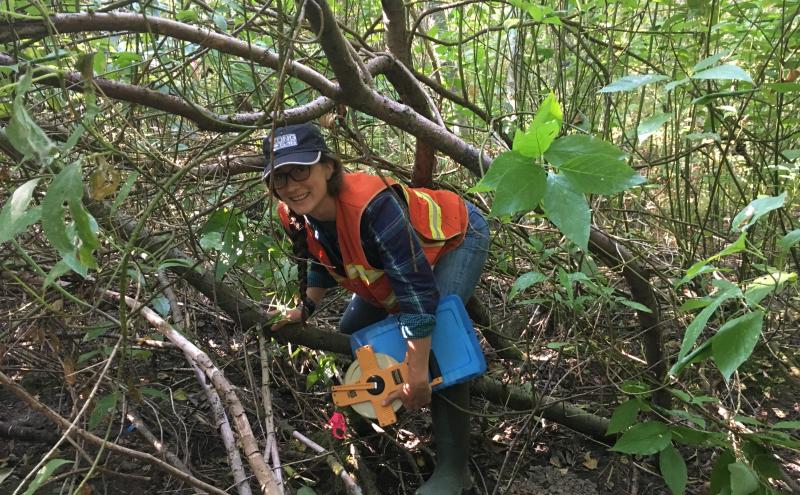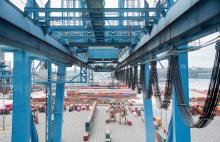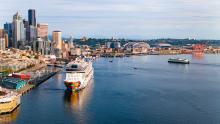
I often feel like a master spy who solves maritime mysteries. While Sherlock Holmes solves crimes, I solve “When, Where, Who and What” questions about international trade. I’m a market and research analyst for The Northwest Seaport Alliance, with a more than 20-year career in international trade and a focus in market research. The skillset needed for this job includes synthesizing data from multiple sources, the ability to see patterns amidst mass data, a love of investigation and peeling back layers, and a need to find answers to complex questions — not to mention attention to detail and strong organizational skills. My detective tools are Access and Excel — I adore pivot tables — and now cutting-edge data visualization tools like Tableau. My ultimate reward is solving the mystery and making “big data” comprehensive and digestible.
I became an analyst quite by accident. However, degrees in marketing, market research, statistics, computer science, math, social sciences, business administration, or communications are quite common in the field. Having strong proficiencies in Excel and Access is crucial and becoming versed in software like Tableau or Power BI would prove extremely useful for anyone pursuing a career as a data analyst.
Starting the day
Before COVID-19
I was a bus rider. Depending on the time, I would catch a bus that gave me a five-minute walk or one that gave me a 15-minute walk. I preferred the latter to increase my daily step count. The longer walk also happened to take me through the Pike Place Market with the sounds of vendors setting up for the day and the tempting aromas of Le Panier, Piroshky Piroshky, and Starbucks. Inevitably, the “original” Starbucks would have visitors who beat the crowds by getting there early. When I was disciplined, I would wake up early on Tuesdays and Thursdays and do a 30-minute workout before my 8:00 start.
Post COVID-19
I am working from home. I realized early on that a lot of my habits around exercise, nutrition, and drinking water were tied to work, so I had to quickly adjust.
My day
I begin each day with a list of projects I plan to work on … then life takes over, which I believe to be true for most jobs.
Checking email is my first task. Inevitably, a request will have come in that trumps my “to do list.” There’s no “normal day” routine, which keeps me on my toes. Due to the nature of my position, however, my desk does have a natural rhythm.
There are tasks that I do every day like tracking Port of Seattle vessel activity and collecting industry clips that I use to write a monthly commercial brief.
There are tasks I do throughout the week, like drafting social media posts, updating the website, and various research projects. I also have weekly meetings with my manager, work team, and extended work team, coupled with random meetings.
The biggest bucket of work is around monthly cargo reporting, which is around a two-week process, which ranges from collecting reports, inputting data, reconciling input and reporting. The meat and potatoes of the month are captured in a commercial brief, highlighting industry news. I also write a press release and post it and relevant files online.
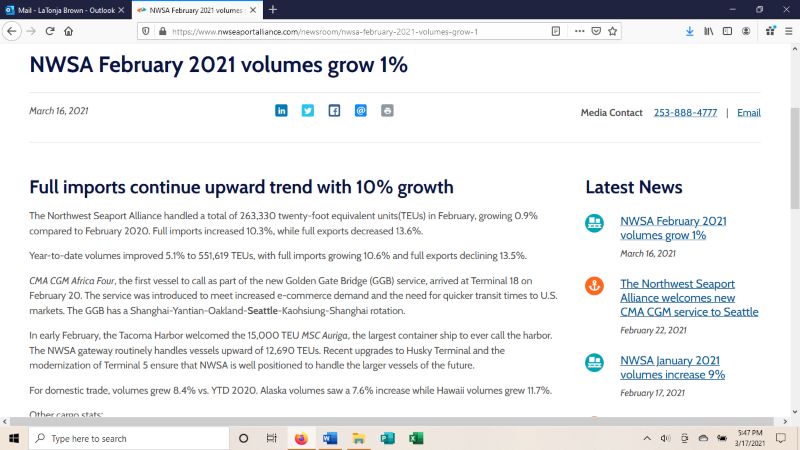
I also produce a monthly newsletter. Writing and editing is something I love to do, so the process is an extremely rewarding body of work. I write some of the articles and work with teammates on others.
Outside of monthly reporting, I also have quarterly and yearly reports that come from a variety of data sources. I am also responsible for developing the yearly forecast.
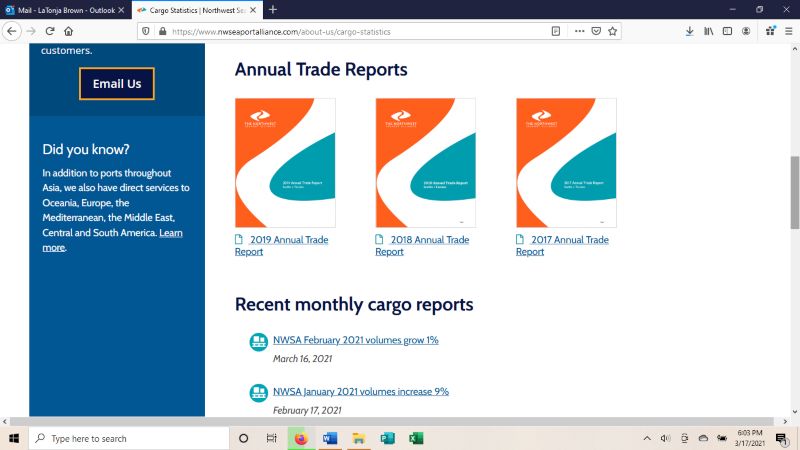
The remainder of my time is spent creating on ad-hoc reports around a particular topic. For example, in the past years, you may have seen articles about the trade war. So, someone may have questions regarding how they will impact trade.
Some of my favorite data sources available to the public are:
- Washington State Department of Agriculture
- Washington Council on International Trade, and
- the United States Census Bureau.
Lunch
Whether working from the office or work, I try to use my lunch hour to walk or work out.
Ending the Day
The demarcation between work and home was much clearer before COVID-19.
Pre-COVID-19
I would sign off and reverse my commute. I would walk through the market regardless of how I got to work. The market would be much busier than the morning and there would be a line at Starbucks, especially on sunny days.
Post-COVID-19
I have to really focus on the time. When I first began working from home, I would lose track and end up working late. Now I try to be mindful of the time, and schedule a separation — like planning virtual walking dates after hours to force me to disconnect.
Home
Pre-COVID
I would get home and prepare for the next day. I would unpack and repack my backpack. I would lay out what I planned on wearing the next day. I would prepare my fruits, vegetable, nuts and other snacks together for the next day. After dinner, putzing around, and a good night’s sleep, I would do the whole process again.

